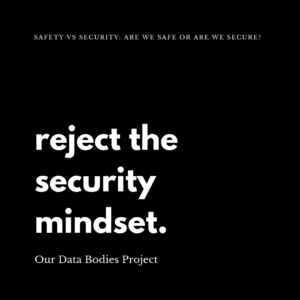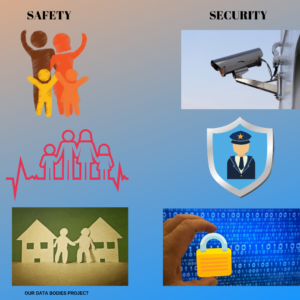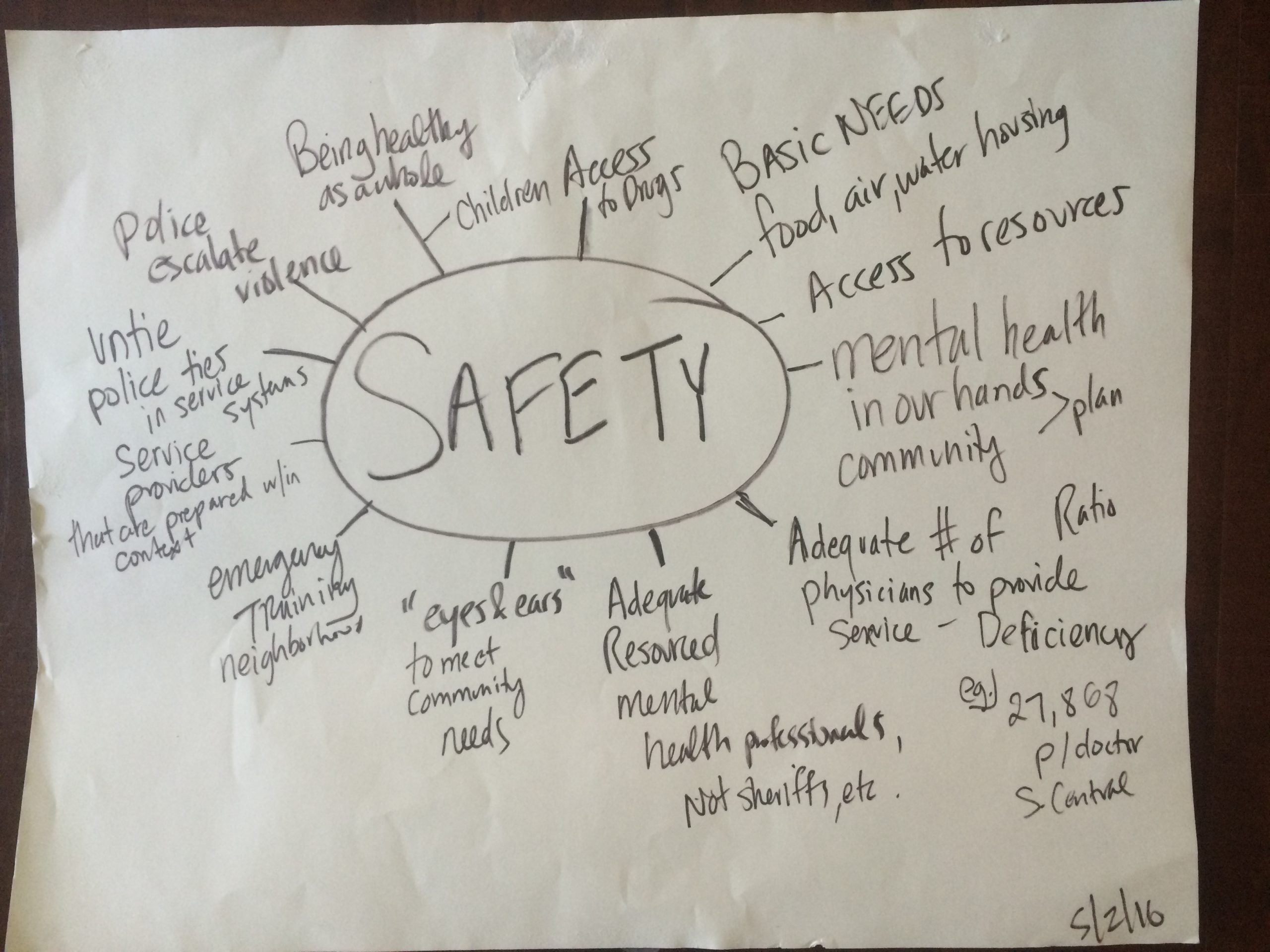Safety vs. Security: Are You Safe or Are You Secure?
By Tawana Petty
ODB has created a series of “tip sheets” that provide context and background about privacy issues faced by members of historically marginalized groups. Safety vs. Security: Are You Safe or Are You Secure? is part of this series and will soon be published as part of our forthcoming Digital Defense Playbook: Community Power Tools for Reclaiming Data.
Unfortunately, when people think about security, they often equate it with safety. The synonymous use of these terms can cause harm to those at the end of the systems designed under this conflation. Security is not inherently safe. In fact, most times security is on the opposite side of the spectrum. When people think of security, they are typically thinking about securing items, property, or even their identity. Very often, this mindset does not have a human factor involved. To be safe, can mean to be secure, but to be secure does not necessarily mean a person is safe. We install security systems on our homes to protect our property. We advocate for security cameras on police officers in order to hold accountable those officers who engage in police brutality, and we add security alarms to our vehicles in hopes that we deter theft. Although these mechanisms may provide us with a temporary measure of comfort, they have proven time and time again that they do not increase our safety. An alarm system cannot ensure an individual is protected from actual harm, just as a body camera cannot prevent police brutality. The ways we talk about safety and security are important as we think about the healthy digital ecosystem we hope to create.

ODB Flyer (Detroit, 2018)
There is no magic spell that can guarantee our safety. There will always be circumstances outside of human control that put us at risk. However, as we think about data systems and technology, there are measures we can take to increase our safety and maximize our security. We can add tools such as Signal or a VPN to make our technology more secure, but in order to make our interactions – digital and otherwise – safer, they must be connected to a healthy digital and non-digital ecosystem. If a person sends an encrypted text message and the user on the other end is also encrypted, chances are the communication is secure. However, if the person on the other end is not a trusted comrade, the level of security added to the technology holds little relevance. This is the mindset one must have when engaging in digital security and data safety.
Often, for undocumented, Black communities and other marginalized communities, the more secure a city proposes to be, the less safe those communities become. When cities invest in the security of neighborhoods by adding surveillance cameras and increasing the militarization of police departments, it poses an imminent threat to those residents who are often deemed expendable. The security mindset without the human element is inherently unsafe.
One of the ways we can increase our safety, is by nurturing relationships. This applies to online and offline communication. A neighbor who regularly communicates with other neighbors has a greater chance at being safe than a neighbor who has no one looking out for them. Neighbors who have agreed to turn on their porch lights in order to keep their streets lit and lookout for one another are engaged in nurturing safety. This is
different than adding a security system which is meant to protect your property and belongings.
These methods of fostering a safe community are also essential to our online communication. A person who experiences unsolicited spam or damaging images or communication via email, or on social media receives greater protection when there is a community of people looking out for them. Once they are alerted by their online community about the breach, they can increase their security by changing their password. The online community may also engage in collective action, such as reporting the spammer to social media administrators. This creates a safer online environment.
Principles
Some of the ways in which we can help to foster a safer digital ecosystem is through the implementation of the Detroit Digital Justice Principles (access, participation, common ownership, healthy communities) and the Equitable Internet Initiative Principals (collaborative problem solving, storytelling, education, collaborative community ownership and governance, long term, authentic relationships, and alternative energy). The principles can be found in detail at Detroit Community Technology Project’s website detroitcommunitytech.org.

ODB Flyer (Detroit, 2018)
By nurturing a healthy digital ecosystem, we help to ensure the safety of those we engage with, whether on the computer or in the neighborhood.
It is important as we go about doing the work of creating the world we wish we live in, that we do not conflate what makes us safe with what makes us feel secure. In all we do, the human element must be part of our daily interactions.

